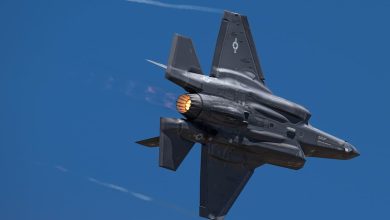France plans low-orbit demonstrator that can target other satellites

PARIS — France plans to launch a maneuverable satellite into low Earth orbit in the next two years that can target other satellites, something French Space Command said is necessary to show the country can take action to protect its space assets.
French nanosatellite builder U-Space will supply the demonstrator in partnership with missile maker MBDA, French Space Command boss Maj. Gen. Philippe Adam and company executives said at an industry conference in Paris on Tuesday. They didn’t detail the satellite’s offensive capabilities, though a presentation video showed the satellite targeting another orbiter with a green laser beam.
France wants to avoid putting kinetic weapons in space that would risk creating debris in orbit, and the demonstrator won’t be weaponized, though it may include a “dazzling” capacity, Adam said on the sidelines of conference. Low Earth orbit, or LEO, is the busiest orbital range, with more than 5,000 satellites launched and thousands more planned, according to U.S. Space Operations Command.
“We need to better understand what’s happening in space, and make sure that we can oppose any misconduct in space actively, if necessary,” Adam said at the Space Defense & Security Summit in the French capital. “We need also to take into account what’s happening in lower altitudes. It’s probably about time, if we consider all that’s happening in this lower orbit.”
France expects to launch the demonstrator satellite, called Splinter, in the next 12 to 24 months, Adam said. The overall project, dubbed Toutatis, will also include a low Earth orbit observation satellite called Lisa-1, and the goal is to test operational scenarios.
Several speakers at the conference highlighted the growing threat in space from adversaries including Russia. The general public should realize that access to space is not a given, and an arms race in space would be destabilizing and should be seen as a threat, according to Marjolijn van Deelen, the special envoy for space at the European External Action Service.
“We’re dealing with adversaries whose level of restraint is going down and down,” said Lt. Gen. Bertrand Le Meur, France’s director for defense strategy, foresight and counter-proliferation. The French plan “for us a big step, showing that we are anticipating some potential threats in low Earth orbit,” he said.
Destructive space arms are not a French priority, and neutralizing an opponent in space could mean moving a satellite between an adversary and a friendly asset to prevent hostile action, according to Adam. Dissuasion also requires being able to see what adversaries are doing and make them aware they are being seen, in addition to having the means to intimidate and discourage, the general said.
Nevertheless, “for deterrence to be effective, we also need real means of action, and those means of action have to be known and recognized as effective,” Adam said. He said adversaries already have the means to destroy French satellites.
France still hasn’t launched its experimental patroller nanosatellite Yoda, which is ready and waiting to be lifted into geostationary orbit, according to Adam, who declined to say when that might happen. Originally planned for 2023, Yoda has been delayed due to a lack of available launch slots.
The country is the world’s fourth-biggest spender on space defense and security, behind the U.S., China and Russia, according to space-industry consultant Novaspace, which organized the summit. French military space spending was around $1.3 billion in 2023, dwarfed by the U.S. with $38.9 billion and China with $8.8 billion, and about half the Russian budget, according to Novaspace.
Pan-European missile maker MBDA has been experimenting with laser weapons, and has participated in France’s AsterX military space exercise in the past two years. The Toutatis project will move space defense beyond simulation, said Nicolas Lefort, MBDA’s head of new markets and business development.
“Space defense starts on the ground, and the good news is that we at MBDA already cover that mission very well,” Lefort said. “Our ambition is to bring defense to low Earth orbit, where the threats have now become real. We really look forward to demonstrating that the Space Command can deal with suspicious activities in LEO in the most reactive way.”
Rudy Ruitenberg is a Europe correspondent for Defense News. He started his career at Bloomberg News and has experience reporting on technology, commodity markets and politics.
Read the full article here






